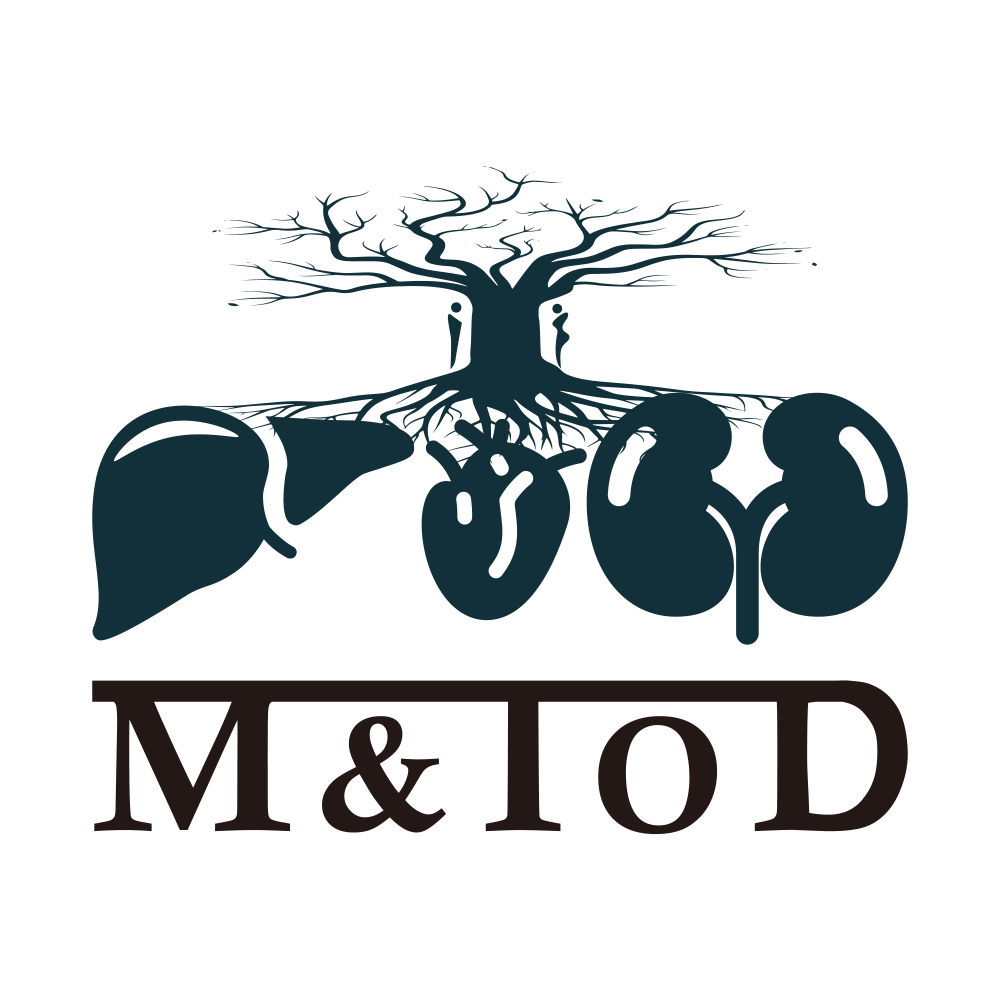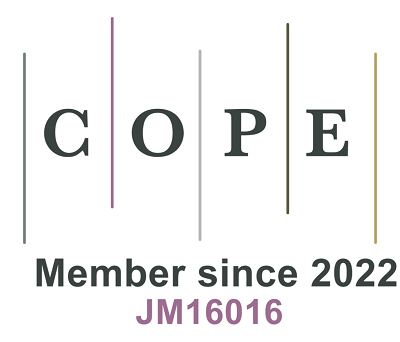REFERENCES
2. Briffa J, Sinagra E, Blundell R. Heavy metal pollution in the environment and their toxicological effects on humans. Heliyon. 2020;6:e04691.
3. Jomova K, Alomar SY, Nepovimova E, Kuca K, Valko M. Heavy metals: toxicity and human health effects. Arch Toxicol. 2025;99:153-209.
4. Fisher RM, Gupta V. Heavy metals. Available from: https://www.ncbi.nlm.nih.gov/books/NBK557806/. [Last accessed on 16 Jul 2025].
5. Teschke R, Xuan TD. Heavy metals, halogenated hydrocarbons, phthalates, glyphosate, cordycepin, alcohol, drugs, and herbs, assessed for liver injury and mechanistic steps. Front Biosci. 2022;27:314.
6. Teschke R. Aluminum, arsenic, beryllium, cadmium, chromium, cobalt, copper, iron, lead, mercury, molybdenum, nickel, platinum, thallium, titanium, vanadium, and zinc: molecular aspects in experimental liver injury. Int J Mol Sci. 2022;23:12213.
7. Tchounwou PB, Yedjou CG, Patlolla AK, Sutton DJ. Heavy metal toxicity and the environment. Exp Suppl. 2012;101:133-64.
9. Rehman K, Fatima F, Waheed I, Akash MSH. Prevalence of exposure of heavy metals and their impact on health consequences. J Cell Biochem. 2018;119:157-84.
10. Teschke R. Copper, iron, cadmium, and arsenic, all generated in the universe: elucidating their environmental impact risk on human health including clinical liver injury. Int J Mol Sci. 2024;25:6662.
11. Phatak P, Brissot P, Wurster M, et al. A phase 1/2, dose-escalation trial of deferasirox for the treatment of iron overload in HFE-related hereditary hemochromatosis. Hepatology. 2010;52:1671-779.
12. Niederau C, Fischer R, Sonnenberg A, Stremmel W, Trampisch HJ, Strohmeyer G. Survival and causes of death in cirrhotic and in noncirrhotic patients with primary hemochromatosis. N Engl J Med. 1985;313:1256-62.
13. Niederau C, Strohmeyer G, Stremmel W. Epidemiology, clinical spectrum and prognosis of hemochromatosis. Adv Exp Med Biol. 1994;356:293-302.
14. Niederau C, Fischer R, Pürschel A, Stremmel W, Häussinger D, Strohmeyer G. Long-term survival in patients with hereditary hemochromatosis. Gastroenterology. 1996;110:1107-19.
15. Corti P, Ferrari GM, Faraguna MC, et al. Haemochromatosis in children: a national retrospective cohort promoted by the A.I.E.O.P. (Associazione Italiana Emato-Oncologia Pediatrica) study group. Br J Haematol. 2024;204:306-14.
16. Strohmeyer G, Niederau C, Stremmel W. Survival and causes of death in hemochromatosis. Observations in 163 patients. Ann N Y Acad Sci. 1988;526:245-57.
17. Teschke R. Hemochromatosis: ferroptosis, ROS, Gut microbiome, and clinical challenges with alcohol as confounding variable. Int J Mol Sci. 2024;25:2668.
18. Weiss KH, Lozoya JC, Tuma S, et al. Copper-induced translocation of the Wilson disease protein ATP7B independent of Murr1/COMMD1 and Rab7. Am J Pathol. 2008;173:1783-94.
19. Merle U, Schaefer M, Ferenci P, Stremmel W. Clinical presentation, diagnosis and long-term outcome of Wilson’s disease: a cohort study. Gut. 2007;56:115-20.
20. Stremmel W, Weiskirchen R. Therapeutic strategies in Wilson disease: pathophysiology and mode of action. Ann Transl Med. 2021;9:732.
21. Weiskirchen S, Kim P, Weiskirchen R. Determination of copper poisoning in Wilson’s disease using laser ablation inductively coupled plasma mass spectrometry. Ann Transl Med. 2019;7:S72.
22. Stremmel W. Bis-choline tetrathiomolybdate as old drug in a new design for Wilson’s disease: good for brain and liver? Hepatology. 2019;69:901-3.
23. Kim P, Zhang CC, Thoröe-Boveleth S, et al. Analyzing the therapeutic efficacy of bis-choline-tetrathiomolybdate in the Atp7b-/- copper overload mouse model. Biomedicines. 2021;9:1861.
24. Ferenci P, Stremmel W, Członkowska A, et al. Age and sex but not ATP7B genotype effectively influence the clinical phenotype of Wilson disease. Hepatology. 2019;69:1464-76.
25. Weiss KH, Stremmel W. Evolving perspectives in Wilson disease: diagnosis, treatment and monitoring. Curr Gastroenterol Rep. 2012;14:1-7.
26. Stremmel W, Meyerrose KW, Niederau C, Hefter H, Kreuzpaintner G, Strohmeyer G. Wilson disease: clinical presentation, treatment, and survival. Ann Intern Med. 1991;115:720-6.
27. Teschke R, Eickhoff A. Wilson disease: copper-mediated cuproptosis, iron-related ferroptosis, and clinical highlights, with comprehensive and critical analysis update. Int J Mol Sci. 2024;25:4753.
28. Gaberšek M, Watts MJ, Gosar M. Attic dust: an archive of historical air contamination of the urban environment and potential hazard to health? J Hazard Mater. 2022;432:128745.
29. Ghobakhloo S, Khoshakhlagh AH, Mostafaii GR, Carlsen L. Biomonitoring of metals in the blood and urine of waste recyclers from exposure to airborne fine particulate matter (PM2.5). J Environ Health Sci Eng. 2025;23:2.
30. Poggere G, Gasparin A, Barbosa JZ, Melo GW, Corrêa RS, Motta ACV. Soil contamination by copper: sources, ecological risks, and mitigation strategies in Brazil. J. Trace Elem Miner. 2023;4:100059.
31. Karim MA, Aryanto E, Juniar H, Astuti PW. Kinetic, isotherm, and thermodynamic study of Cu(II) ions removal from groundwater using acid-activated carbon based on coconut tree waste (Cocos nucifera L.). Ecol Eng Environ Technol. 2025;26:1-16.
32. Shabbir Z, Sardar A, Shabbir A, et al. Copper uptake, essentiality, toxicity, detoxification and risk assessment in soil-plant environment. Chemosphere. 2020;259:127436.
33. Iakovidis I, Delimaris I, Piperakis SM. Copper and its complexes in medicine: a biochemical approach. Mol Biol Int. 2011;2011:594529.
34. Merle U, Encke J, Tuma S, Volkmann M, Naldini L, Stremmel W. Lentiviral gene transfer ameliorates disease progression in Long-Evans cinnamon rats: an animal model for Wilson disease. Scand J Gastroenterol. 2006;41:974-82.
35. Mi X, Li Z, Yan J, et al. Activation of HIF-1 signaling ameliorates liver steatosis in zebrafish atp7b deficiency (Wilson’s disease) models. Biochim Biophys Acta Mol Basis Dis. 2020;1866:165842.
36. Lizaola-Mayo BC, Dickson RC, Lam-Himlin DM, Chascsa DM. Exogenous copper exposure causing clinical wilson disease in a patient with copper deficiency. BMC Gastroenterol. 2021;21:278.
37. Royer A, Sharman T. Copper toxicity. Available from: https://www.ncbi.nlm.nih.gov/books/NBK557456/. [Last accessed on 16 Jul 2025].
38. Liggi M, Murgia D, Civolani A, Demelia E, Sorbello O, Demelia L. The relationship between copper and steatosis in Wilson’s disease. Clin Res Hepatol Gastroenterol. 2013;37:36-40.
39. Chen L, Min J, Wang F. Copper homeostasis and cuproptosis in health and disease. Signal Transduct Target Ther. 2022;7:378.
40. Doguer C, Ha JH, Collins JF. Intersection of iron and copper metabolism in the mammalian intestine and liver. Compr Physiol. 2018;8:1433-61.
41. La Fontaine S, Ackland ML, Mercer JF. Mammalian copper-transporting P-type ATPases, ATP7A and ATP7B: emerging roles. Int J Biochem Cell Biol. 2010;42:206-9.
44. Yu CH, Lee W, Nokhrin S, Dmitriev OY. The structure of metal binding domain 1 of the copper transporter ATP7B reveals mechanism of a singular Wilson disease mutation. Sci Rep. 2018;8:581.
45. Hayashi H, Yano M, Fujita Y, Wakusawa S. Compound overload of copper and iron in patients with Wilson's disease. Med Mol Morphol. 2006;39:121-6.
46. Kadiiska MB, Mason RP. In vivo copper mediated free radical production: an ESR spin-trapping study. Spectrochim Acta A Mol Biomol Spectrosc. 2002;58:1227-39.
47. Shiono Y, Wakusawa S, Hayashi H, et al. Iron accumulation in the liver of male patients with Wilson’s disease. Am J Gastroenterol. 2001;96:3147-51.
49. Xue Q, Kang R, Klionsky DJ, Tang D, Liu J, Chen X. Copper metabolism in cell death and autophagy. Autophagy. 2023;19:2175-95.
50. Gromadzka G, Wierzbicka D, Litwin T, Przybyłkowski A. Iron metabolism is disturbed and anti-copper treatment improves but does not normalize iron metabolism in Wilson’s disease. Biometals. 2021;34:407-14.
51. Li Y, Du Y, Zhou Y, et al. Iron and copper: critical executioners of ferroptosis, cuproptosis and other forms of cell death. Cell Commun Signal. 2023;21:327.
52. Pak K, Ordway S, Sadowski B, Canevari M, Torres D. Wilson’s disease and iron overload: pathophysiology and therapeutic implications. Clin Liver Dis. 2021;17:61-6.
53. Tang D, Chen X, Kroemer G. Cuproptosis: a copper-triggered modality of mitochondrial cell death. Cell Res. 2022;32:417-8.
54. Tsvetkov P, Coy S, Petrova B, et al. Copper induces cell death by targeting lipoylated TCA cycle proteins. Science. 2022;375:1254-61.
55. Wang Y, Zhang L, Zhou F. Cuproptosis: a new form of programmed cell death. Cell Mol Immunol. 2022;19:867-8.
56. Xie J, Yang Y, Gao Y, He J. Cuproptosis: mechanisms and links with cancers. Mol Cancer. 2023;22:46.
57. Antczak-Kowalska M, Członkowska A, Eyileten C, et al. Autoantibodies in Wilson disease: impact on clinical course. JIMD Rep. 2022;63:508-17.
58. Jańczyk W, Bierła JB, Trojanowska I, Wierzbicka-Rucińska A, Cukrowska B, Socha P. Prevalence and significance of autoantibody seropositivity in children with Wilson’s disease. Diagnostics. 2023;13:768.
59. Penning LC, Berenguer M, Czlonkowska A, et al. A century of progress on Wilson disease and the enduring challenges of genetics, diagnosis, and treatment. Biomedicines. 2023;11:420.
60. Stremmel W, Longerich T, Liere R, Vacata V, van Helden J, Weiskirchen R. Wilson disease - the impact of hyperimmunity on disease activity: a case report. World J Clin Cases. 2021;9:1386-93.
61. Goyal MK, Sinha S, Patil SA, Jayalekshmy V, Taly AB. Do cytokines have any role in Wilson’s disease? Clin Exp Immunol. 2008;154:74-9.
62. Hopkins RG, Failla ML. Copper deficiency reduces interleukin-2 (IL-2) production and IL-2 mRNA in human T-lymphocytes. J Nutr. 1997;127:257-62.
63. Hopkins RG, Failla ML. Transcriptional regulation of interkeukin-2 gene expression is impaired by copper deficiency in Jurkat T lymphocytes. J Nutr. 1999;129:596-601.
64. Kalita J, Kumar V, Misra UK, Ranjan A, Khan H, Konwar R. A study of oxidative stress, cytokines and glutamate in Wilson disease and their asymptomatic siblings. J Neuroimmunol. 2014;274:141-8.
65. Kelley DS, Daudu PA, Taylor PC, Mackey BE, Turnlund JR. Effects of low-copper diets on human immune response. Am J Clin Nutr. 1995;62:412-6.
66. Kisseleva T, Brenner D. Molecular and cellular mechanisms of liver fibrosis and its regression. Nat Rev Gastroenterol Hepatol. 2021;18:151-66.
67. Wu P, Dong J, Cheng N, Yang R, Han Y, Han Y. Inflammatory cytokines expression in Wilson’s disease. Neurol Sci. 2019;40:1059-66.
68. Cai X, Deng L, Ma X, et al. Altered diversity and composition of gut microbiota in Wilson’s disease. Sci Rep. 2020;10:21825.
69. Taylor AA, Tsuji JS, Garry MR, et al. Critical review of exposure and effects: implications for setting regulatory health criteria for ingested copper. Environ Manage. 2020;65:131-59.
70. Dev S, Kruse RL, Hamilton JP, Lutsenko S. Wilson disease: update on pathophysiology and treatment. Front Cell Dev Biol. 2022;10:871877.
71. Russell K, Gillanders LK, Orr DW, Plank LD. Dietary copper restriction in Wilson’s disease. Eur J Clin Nutr. 2018;72:326-31.
72. Gioilli BD, Kidane TZ, Fieten H, et al. Secretion and uptake of copper via a small copper carrier in blood fluid. Metallomics. 2022;14:mfac006.
73. van den Berghe PV, Klomp LW. New developments in the regulation of intestinal copper absorption. Nutr Rev. 2009;67:658-72.
74. Nose Y, Thiele DJ. Mechanism and regulation of intestinal copper absorption. Genes Nutr. 2010;5:11-4.
75. Fontes A, Pierson H, Bierła JB, et al. Copper impairs the intestinal barrier integrity in Wilson disease. Metabolism. 2024;158:155973.
76. Lane DJ, Bae DH, Merlot AM, Sahni S, Richardson DR. Duodenal cytochrome b (DCYTB) in iron metabolism: an update on function and regulation. Nutrients. 2015;7:2274-96.
77. Dzieżyc-Jaworska K, Litwin T, Członkowska A. Clinical manifestations of Wilson disease in organs other than the liver and brain. Ann Transl Med. 2019;7:S62.
78. Chen H, Wang X, Xing J, et al. Role and mechanisms of cuproptosis in the pathogenesis of Wilson’s disease (Review). Int J Mol Med. 2025;56:117.
80. Tapiero H, Townsend DM, Tew KD. Trace elements in human physiology and pathology. Copper. Biomed Pharmacother. 2003;57:386-98.
81. Gaetke LM, Chow CK. Copper toxicity, oxidative stress, and antioxidant nutrients. Toxicology. 2003;189:147-63.
82. Gaetke LM, Chow-Johnson HS, Chow CK. Copper: toxicological relevance and mechanisms. Arch Toxicol. 2014;88:1929-38.
83. Li M, Tang S, Velkov T, Shen J, Dai C. Copper exposure induces mitochondrial dysfunction and hepatotoxicity via the induction of oxidative stress and PERK/ATF4 -mediated endoplasmic reticulum stress. Environ Pollut. 2024;352:124145.
85. Zischka H, Einer C. Mitochondrial copper homeostasis and its derailment in Wilson disease. Int J Biochem Cell Biol. 2018;102:71-5.
86. Dong QY, Wu ZY. Advance in the pathogenesis and treatment of Wilson disease. Transl Neurodegener. 2012;1:23.
87. Patil M, Sheth KA, Krishnamurthy AC, Devarbhavi H. A review and current perspective on Wilson disease. J Clin Exp Hepatol. 2013;3:321-36.
88. Zang S, He Q, Zeng Y, et al. Elucidating cuproptosis-linked redox dynamics in Wilson’s disease via a reversible ratiometric fluorescence strategy. Chem Commun. 2025;61:5507-10.
89. Immergluck J, Grant LM, Anilkumar AC. Wilson disease. Available from: https://www.ncbi.nlm.nih.gov/books/NBK441990/. [Last accessed on 16 Jul 2025].
90. Cao S, Wang Q, Sun Z, et al. Role of cuproptosis in understanding diseases. Hum Cell. 2023;36:1244-52.
91. Li X, Ding B, Li J, et al. Valence-tailored copper-based nanoparticles for enhanced chemodynamic therapy through prolonged ROS generation and potentiated GSH depletion. Nano Res. 2024;17:6342-52.
92. Liu M, Xu Y, Zhao Y, Wang Z, Shi D. Hydroxyl radical-involved cancer therapy via Fenton reactions. Front Chem Sci Eng. 2022;16:345-63.
93. Yoon J, Solomon EI. Electronic structure of the peroxy intermediate and its correlation to the native intermediate in the multicopper oxidases: insights into the reductive cleavage of the o-o bond. J Am Chem Soc. 2007;129:13127-36.
94. Blythe IM, Xu J, Fernandez Odell JS, Kampf JW, Bowring MA, Sanford MS. Characterization and reactivity of copper(II) and copper(III) σ-aryl intermediates in aminoquinoline-directed C-H functionalization. J Am Chem Soc. 2023;145:18253-9.
95. Wang Y, Zhou Y, Sun W, Wang X, Yao J, Li H. Identifying radical pathways for Cu(I)/Cu(II) relay catalyzed oxygenation via online coupled EPR/UV-Vis/near-IR monitoring. Adv Sci. 2024;11:e2402890.
96. Wang M, Zheng L, Ma S, Lin R, Li J, Yang S. Cuproptosis: emerging biomarkers and potential therapeutics in cancers. Front Oncol. 2023;13:1288504.
97. Harada M, Miyagawa K, Honma Y, et al. Excess copper chelating therapy for Wilson disease induces anemia and liver dysfunction. Intern Med. 2011;50:1461-4.
98. Shiono Y, Hayashi H, Wakusawa S, Yano M. Ultrastructural identification of iron and copper accumulation in the liver of a male patient with Wilson disease. Med Electron Microsc. 2001;34:54-60.
99. Wang X, Shao N, Zhang X, et al. Ferulic acid activates SIRT1-mediated ferroptosis signaling pathway to improve cognition dysfunction in Wilson’s disease. Neuropsychiatr Dis Treat. 2023;19:2681-96.
100. Pfeiffenberger J, Gotthardt DN, Herrmann T, et al. Iron metabolism and the role of HFE gene polymorphisms in Wilson disease. Liver Int. 2012;32:165-70.
101. Symons MCR, Gutteridge JMC. Free radicals and iron: chemistry, biology, and medicine. Oxford, 1998; 2023.
102. Aruoma OI. Free radicals, oxidative stress, and antioxidants in human health and disease. J Am Oil Chem Soc. 1998;75:199-212.
103. Kadiiska MB, Burkitt MJ, Xiang QH, Mason RP. Iron supplementation generates hydroxyl radical in vivo. An ESR spin-trapping investigation. J Clin Invest. 1995;96:1653-7.
104. Gu J, Guo C, Ruan J, et al. From ferroptosis to cuproptosis, and calcicoptosis, to find more novel metals-mediated distinct form of regulated cell death. Apoptosis. 2024;29:586-604.
105. Zeng L, Yang K, Yu G, et al. Advances in research on immunocyte iron metabolism, ferroptosis, and their regulatory roles in autoimmune and autoinflammatory diseases. Cell Death Dis. 2024;15:481.
106. Kim P, Zhang CC, Thoröe-Boveleth S, et al. Accurate measurement of copper overload in an experimental model of Wilson disease by laser ablation inductively coupled plasma mass spectrometry. Biomedicines. 2020;8:356.
107. Boaru SG, Merle U, Uerlings R, et al. Laser ablation inductively coupled plasma mass spectrometry imaging of metals in experimental and clinical Wilson’s disease. J Cell Mol Med. 2015;19:806-14.
108. Teschke R, Danan G. Advances in idiosyncratic drug-induced liver injury issues: new clinical and mechanistic analysis due to roussel uclaf causality assessment method use. Int J Mol Sci. 2023;24:10855.
109. Yeong TT, Lim KH, Goubet S, Parnell N, Verma S. Natural history and outcomes in drug-induced autoimmune hepatitis. Hepatol Res. 2016;46:E79-88.
110. Chung Y, Morrison M, Zen Y, Heneghan MA. Defining characteristics and long-term prognosis of drug-induced autoimmune-like hepatitis: a retrospective cohort study. United European Gastroenterol J. 2024;12:66-75.
111. Martínez-Casas OY, Díaz-Ramírez GS, Marín-Zuluaga JI, et al. Differential characteristics in drug-induced autoimmune hepatitis. JGH Open. 2018;2:97-104.
112. Weber S, Benesic A, Rotter I, Gerbes AL. Early ALT response to corticosteroid treatment distinguishes idiosyncratic drug-induced liver injury from autoimmune hepatitis. Liver Int. 2019;39:1906-17.
113. Danan G, Teschke R. RUCAM in drug and herb induced liver injury: the update. Int J Mol Sci. 2015;17:14.
114. Hennes EM, Zeniya M, Czaja AJ, et al; International Autoimmune Hepatitis Group. Simplified criteria for the diagnosis of autoimmune hepatitis. Hepatology. 2008;48:169-76.
115. Nagral A, Sarma MS, Matthai J, et al. Wilson’s disease: clinical practice guidelines of the indian national association for study of the liver, the Indian society of pediatric gastroenterology, hepatology and nutrition, and the movement disorders society of India. J Clin Exp Hepatol. 2019;9:74-98.
116. Nagral A, Sarma MS, Matthai J, et al. Corrigendum to “Wilson's disease: clinical practice guidelines of the Indian National Association for the Study of Liver (INASL), The Indian Society of Pediatric Gastroenterology, Hepatology and Nutrition (ISPGHAN) and the Movement Disorders Society of India (MDSI)” [J Clin Exp Hepatol 9 (2019) 74-98]. Available from: https://www.jcehepatology.com/article/S0973-6883(19)30286-5/fulltext. [Last accessed on 28 Jul 2025].
117. Satoh M, Chan EK, Ho LA, et al. Prevalence and sociodemographic correlates of antinuclear antibodies in the United States. Arthritis Rheum. 2012;64:2319-27.
118. Lee Y, Lee ST, Cho H. D-penicillamine-induced ANA (+) ANCA (+) vasculitis in pediatric patients with Wilson’s disease. Clin Nephrol. 2016;85:296-300.
119. Gromadzka G, Czerwińska J, Krzemińska E, Przybyłkowski A, Litwin T. Wilson’s disease-crossroads of genetics, inflammation and immunity/autoimmunity: clinical and molecular issues. Int J Mol Sci. 2024;25:9034.
120. Liu K, Li L, He Y, Zhang S, You H, Wang P. Hepatic progenitor cells reprogrammed from mouse fibroblasts repopulate hepatocytes in Wilson’s disease mice. Stem Cell Res Ther. 2025;16:131.
121. Stremmel W, Merle U, Weiskirchen R. Clinical features of Wilson disease. Ann Transl Med. 2019;7:S61.
122. Fuentealba IC, Aburto EM. Animal models of copper-associated liver disease. Comp Hepatol. 2003;2:5.
123. Petruzzelli R, Catalano F, Crispino R, et al. Prion protein promotes copper toxicity in Wilson disease. Nat Commun. 2025;16:1468.
124. Vogel FS. The deposition of exogenous copper under experimental conditions with observations on its neurotoxic and nephrotoxic properties in relation to Wilson’s disease. J Exp Med. 1959;110:801-10.
125. Zhao L, Xia Z, Wang F. Zebrafish in the sea of mineral (iron, zinc, and copper) metabolism. Front Pharmacol. 2014;5:33.
126. Durack J, Lynch SV. The gut microbiome: Relationships with disease and opportunities for therapy. J Exp Med. 2019;216:20-40.
127. Teschke R, Neuman MG, Liangpunsakul S, Seitz HK. Alcoholic liver disease and the co-triggering role of MEOS with its CYP 2E1 catalytic cycle and ROS. Arch Gastroenterol Res. 2021;2:9-25.
128. Parmanand B, Watson M, Boland KJ, et al. Systemic iron reduction by venesection alters the gut microbiome in patients with haemochromatosis. JHEP Rep. 2020;2:100154.
129. Yilmaz B, Li H. Gut microbiota and iron: the crucial actors in health and disease. Pharmaceuticals. 2018;11:98.
130. Wooton-Kee CR. Therapeutic implications of impaired nuclear receptor function and dysregulated metabolism in Wilson’s disease. Pharmacol Ther. 2023;251:108529.
131. Frigo DE, Bondesson M, Williams C. Nuclear receptors: from molecular mechanisms to therapeutics. Essays Biochem. 2021;65:847-56.
133. Association for the Study of the Liver. EASL-ERN Clinical Practice Guidelines on Wilson’s disease. J Hepatol. 2025;Epub ahead of print.
134. Aboalam HS, Hassan MK, El-Domiaty N, et al. Challenges and recent advances in diagnosing Wilson disease. J Clin Exp Hepatol. 2025;15:102531.
135. Lorenzen C, Dons K, García-Solà C, et al. Relative exchangeable copper, exchangeable copper and total copper in the diagnosis of Wilson disease. Liver Int. 2025;45:e70089.
136. Jung S, Whiteaker JR, Zhao L, Yoo HW, Paulovich AG, Hahn SH. Quantification of ATP7B protein in dried blood spots by peptide immuno-SRM as a potential screen for Wilson’s disease. J Proteome Res. 2017;16:862-71.
137. Tao Z, Kang S, Liu J, et al. A clinical study showing the expression characteristics of cuproptosis markers in cases with Wilson disease. Medicine. 2024;103:e40598.
138. Cai H, Cheng X, Wang XP. ATP7B gene therapy of autologous reprogrammed hepatocytes alleviates copper accumulation in a mouse model of Wilson’s disease. Hepatology. 2022;76:1046-57.
139. Wei R, Yang J, Cheng CW, et al. CRISPR-targeted genome editing of human induced pluripotent stem cell-derived hepatocytes for the treatment of Wilson’s disease. JHEP Rep. 2022;4:100389.









